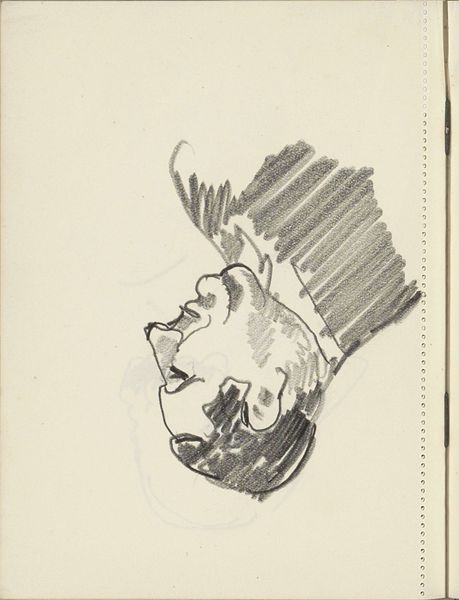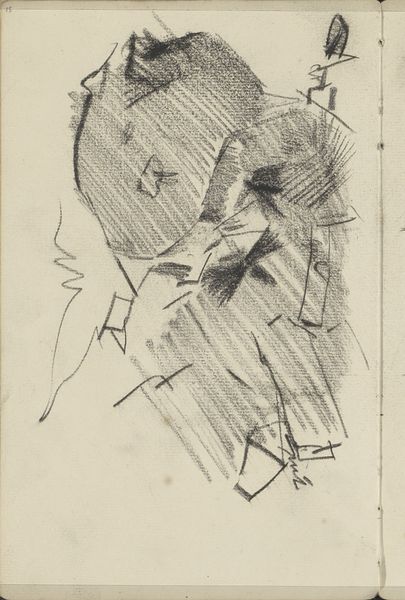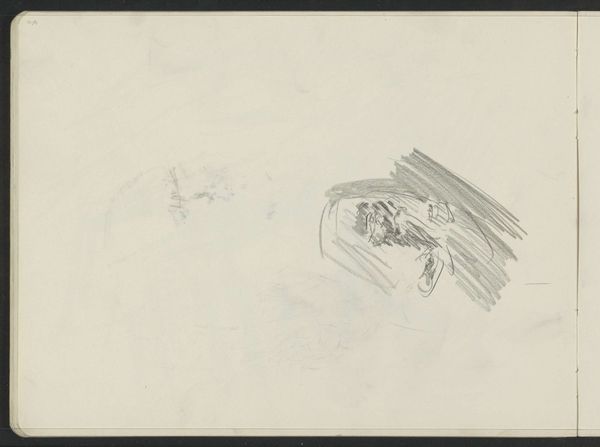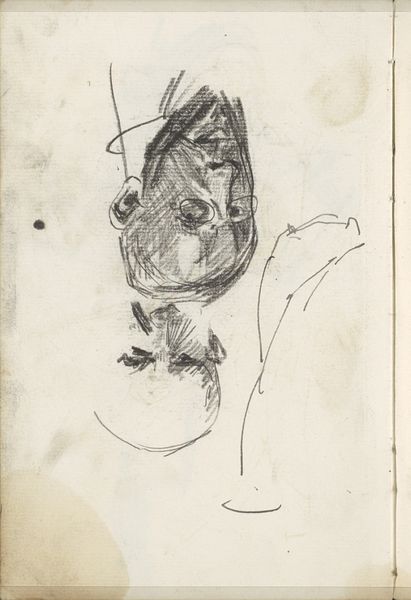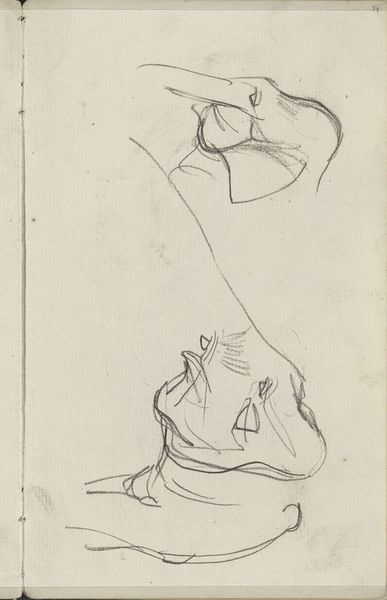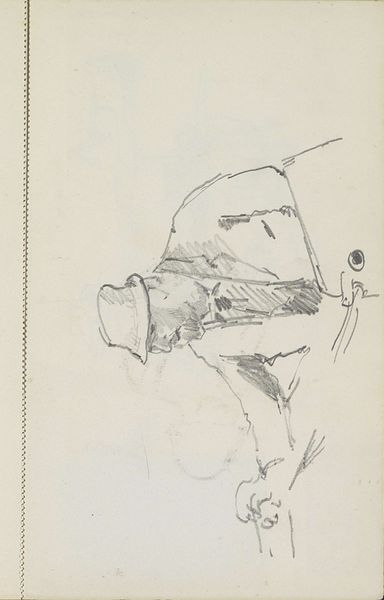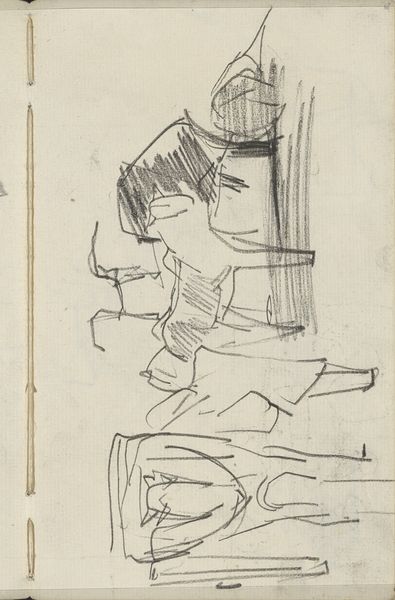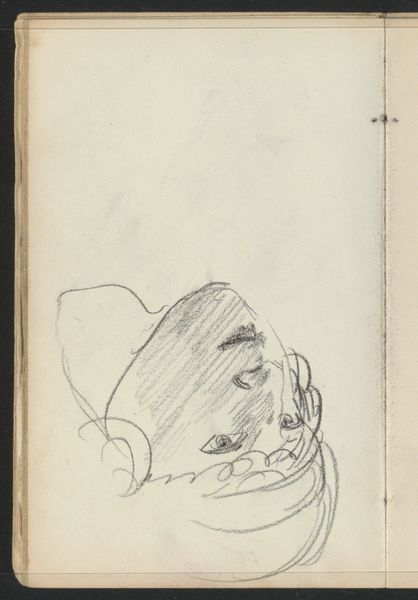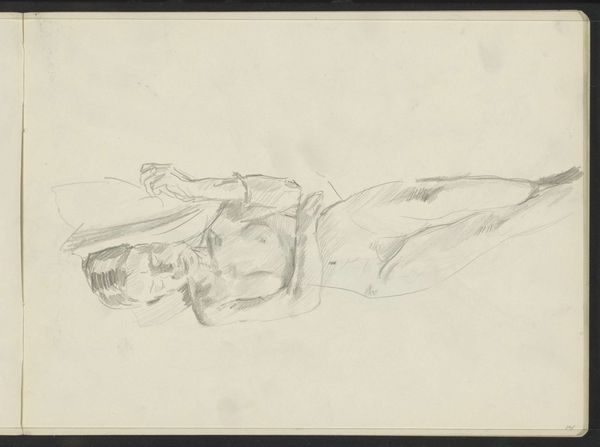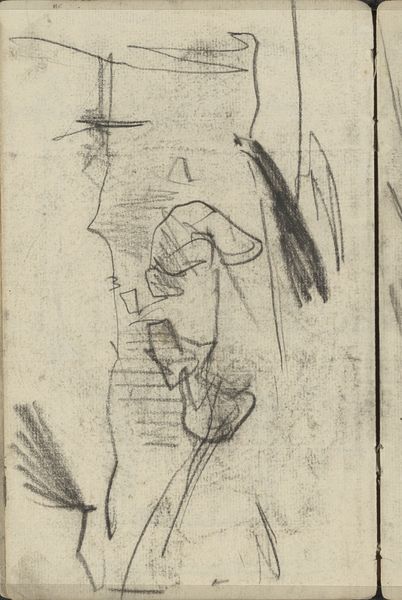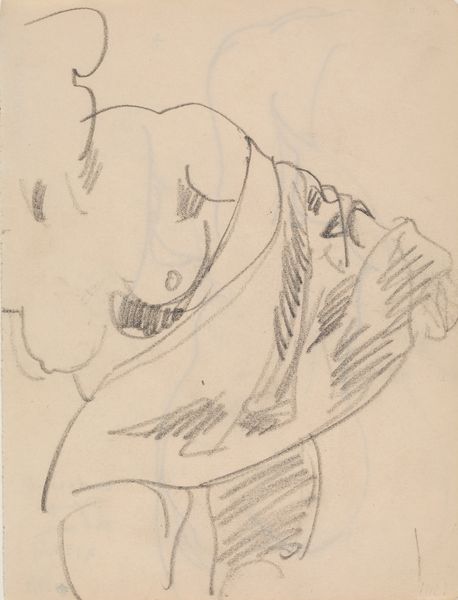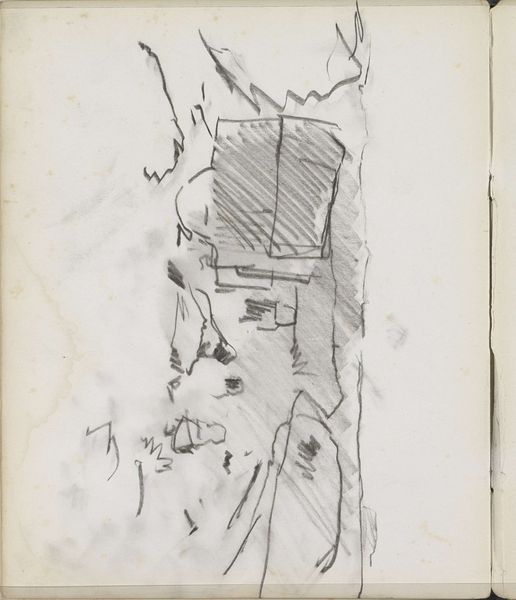
drawing, paper, pencil, chalk
#
portrait
#
17_20th-century
#
drawing
#
quirky sketch
#
german-expressionism
#
cartoon sketch
#
paper
#
personal sketchbook
#
german
#
idea generation sketch
#
ink drawing experimentation
#
pen-ink sketch
#
pencil
#
expressionism
#
chalk
#
sketchbook drawing
#
storyboard and sketchbook work
#
sketchbook art
#
initial sketch
Copyright: Public Domain
Curator: Before us we have Hermann Lismann’s 1923 drawing, "Head of a Sleeping Woman," currently held at the Städel Museum. Executed with pencil and chalk on paper, it captures a moment of profound rest. Editor: It's… remarkably peaceful, isn't it? The simple lines suggest a sort of quiet surrender. The shading evokes softness, like a pillow just conforming to her form. Curator: Consider the context of 1923. Germany was grappling with immense socio-economic pressures, and Expressionism, to which this drawing belongs, mirrored the anxieties of the era. This portrait becomes almost defiant, a sanctuary carved out amidst the turmoil. Is sleep then an escape? An indictment? Editor: The sloped lines of the figure remind me of iconography representing martyrs or saints in repose, those serene depictions of souls untroubled. Perhaps the artist sought to portray a similar sense of peaceful resignation—even if the historical context implies a rather troubled state. What do you suppose those dense hatches represent near the top and lower edges? Curator: Those rapid strokes speak volumes about Expressionism’s focus on conveying raw emotion over objective representation. The dense shading adds to the moodiness— the darkness is more psychological, the anxieties, tensions felt at that moment, perhaps? Editor: And that darkness offers a profound psychological element. The viewer’s eye is drawn both to what is depicted and the stark absence surrounding it, implying an unspoken dialogue between dreaming and waking states. I wonder about its power to inspire? To provoke introspection on cycles of struggle and renewal. Curator: Precisely, it provokes us to reflect on the private lives of those caught within grand historical narratives. Her simple repose serves as an important historical anchor as we look critically at the effects of political moments and systems on our shared, if unequal, humanity. Editor: Yes. It’s an intimate portrayal—it humanizes an era, which so easily becomes relegated to textbooks or political narratives. Thanks to its suggestive strokes it makes us question our definitions of peaceful surrender and, at times, dream state, an active, cultural symbol, as opposed to mere passive activity.
Comments
No comments
Be the first to comment and join the conversation on the ultimate creative platform.
